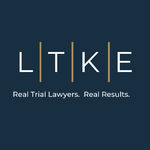A 403(b) Plan - A retirement plan similar to a 401(k) plan, but one which is offered by public schools and certain 501(c)(3) tax-exempt organizations.
A 403(b) plan, also known as a tax-sheltered annuity (TSA) plan or tax deferred annuity (TDA), is a retirement plan for employees of certain tax-exempt organizations, employees of public schools, and certain ministers. The plan can take the form of an annuity contract, a retirement account set up for church employees, or a custodial account invested in mutual funds.
Individuals cannot set up their own 403(b) accounts; only employers can, and there are several ways in which contributions can be made. Elective deferrals are contributions made under a salary reduction agreement, which allows the employer to withhold money from the employee’s paycheck to be directly deposited into the 403(b) account. Non-elective contributions include employer contributions which may be matching, discretionary, or mandatory contributions. Some plans allow participants to make after-tax contributions, which are not excluded from income and cannot be deducted on the participant’s tax return.
For 2020, the limit on elective deferrals has increased from $19,000 to $19,500. The limit on annual additions in 2020 is increased from $56,000 to $57,000. Basically, total employee and employer contributions made to an account can’t exceed the lesser of $57,000 or 100% of includible compensation. Catch-up contributions, if allowed by the plan, can be made by participants who reach age 50 or older by the end of 2020. The maximum amount of catch-up contributions is $6,500 for 2020. An employee who has worked for a qualified organization for 15 or more years may be able to make additional contributions of up to $3,000 for up to five years, provided certain requirements are met.
Benefits: As with other tax-deferred retirement plans, participants do not pay income tax on allowable contributions until they make withdrawals from the plan, usually at retirement age. (This does not apply to contributions made to a Roth contribution program, in which participants pay income tax on contributions to the plan, but distributions are tax-free as long as certain requirements are met.)
Earnings and gains on amounts in the 403(b) account are not taxed until they are withdrawn. (Again, with a Roth account, these earnings are not taxed if withdrawals are qualified distributions.) Participants who contribute to their account may also be eligible for the Retirement Savings Contributions Credit depending on their adjusted gross income level.
Withdrawals: In general, the same tax rules apply to distributions from 403(b) plans that apply to other retirement plans. Distributions cannot be made until the employee reaches age 59 ½ or has a severance from employment, dies, becomes disabled, encounters financial hardship, or has a qualified reservist distribution. Unless certain conditions are met, distributions before age 59 ½ are subject to regular income tax and an additional 10% tax penalty.












